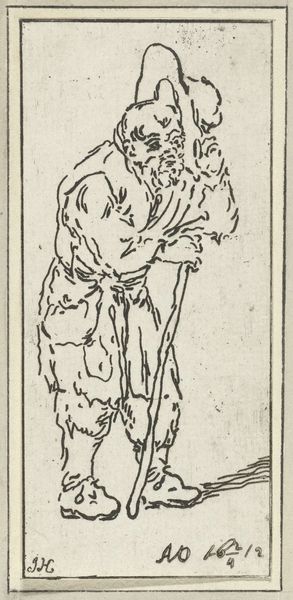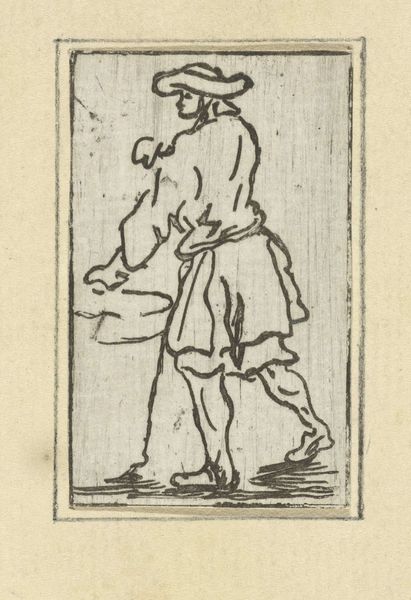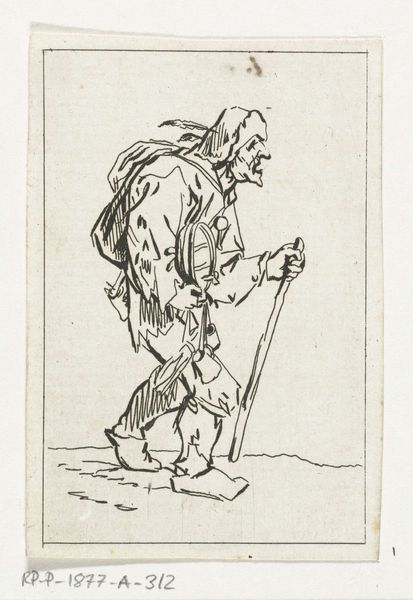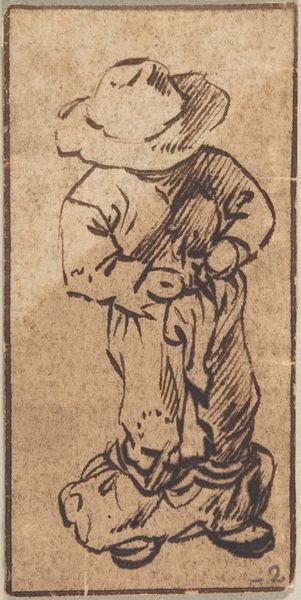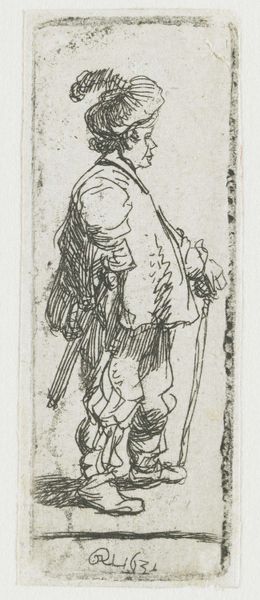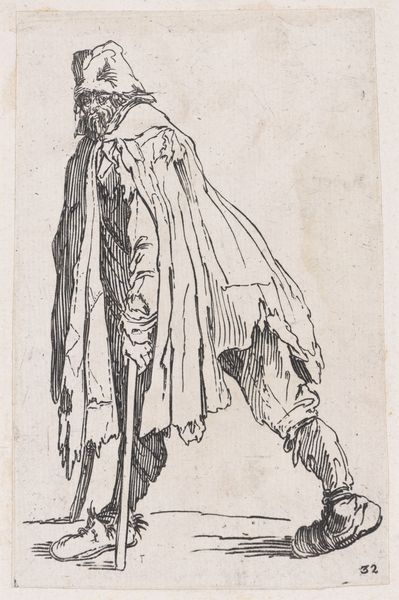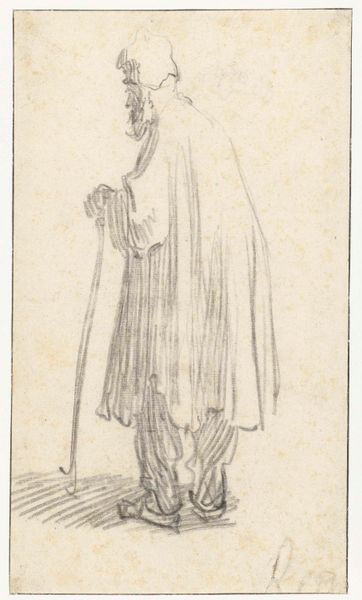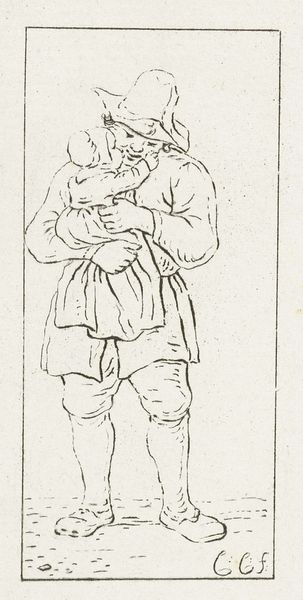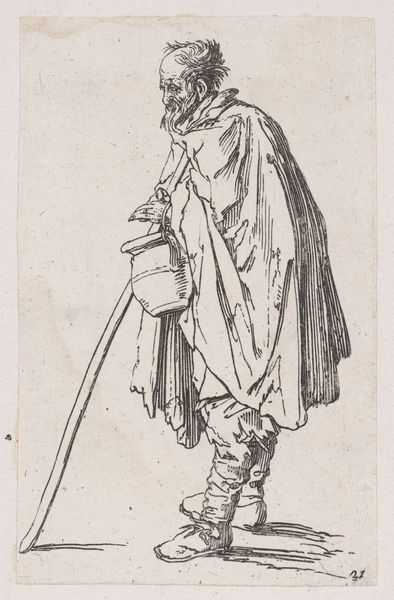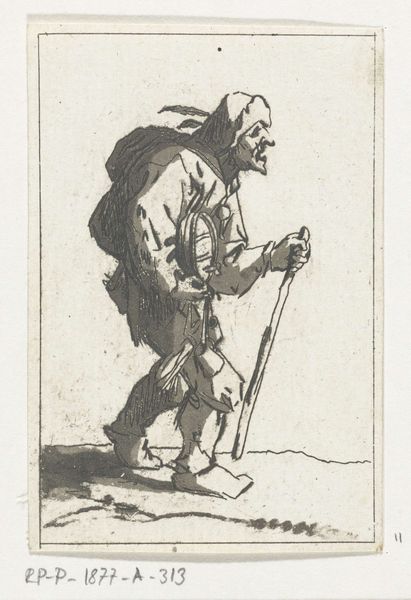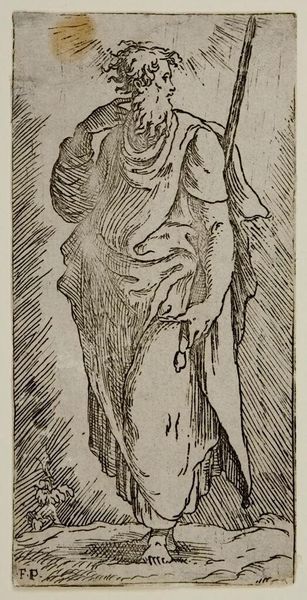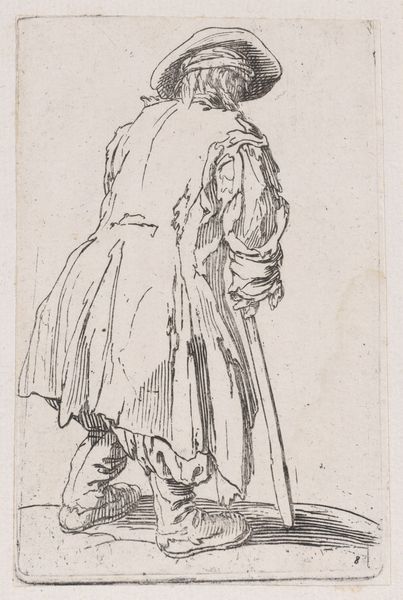
drawing, pen
#
portrait
#
drawing
#
comic strip sketch
#
quirky illustration
#
baroque
#
pen illustration
#
cartoon sketch
#
personal sketchbook
#
ink drawing experimentation
#
pen-ink sketch
#
sketchbook drawing
#
pen
#
genre-painting
#
storyboard and sketchbook work
#
sketchbook art
Dimensions: height 113 mm, width 60 mm
Copyright: Rijks Museum: Open Domain
Jacob Hoolaart created this etching of a man leaning on a stick in the 18th century, using an etching needle to draw through a waxy ground on a copper plate, which was then acid-etched to create the lines that hold ink. The quality of those lines is key here; they vary in thickness and depth, creating a sense of volume and shadow despite the economy of means. This wasn't a unique invention of Hoolaart's, but part of a printmaking tradition that had become increasingly important. The etched line, in particular, lent itself to mass production – think of the illustrations in newspapers and books that circulated widely at this time. Hoolaart uses this technique to depict what is probably a commoner, resting on a stick. Ultimately, remembering the labor of the etching process itself—the skilled hand guiding the needle—allows us to appreciate the artistry involved, challenging any hard separation between the fine and applied arts.
Comments
No comments
Be the first to comment and join the conversation on the ultimate creative platform.
